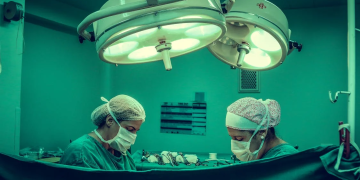
La Clochette Du Coin might have been plucked from the streets of Paris and transported right onto La Jolla Boulevard. The French name of the cafe, La Clochette Du Coin translates into ‘the little bell on the corner’ and with indoor and outdoor seating and a cozy interior, La Clochette Du Coin rings a bell everyone wants to hear. The cafe is inviting with its beamed ceiling and wooden flooring and has a friendly staff. Recently, a friend and I ordered cappuccinos, one wet with lots of coffee and one dry with less, to see how it stacked up with other coffee houses in La Jolla. As you know, there are a bunch of them and all serve pretty good coffee. We were not disappointed. Our cappuccinos came with a foamy layer of cream on top, complete with a barista signature decoration in the cream and a piece of chocolate on the saucer. One sip told us they were perfect, as were the rolls we ordered with them. The food here is just as tasty as the various coffee drinks. Do try the desserts! In case you don’t know, cappuccino, first surfaced as kapuziner in 18th century Austria. It was a coffee drink mixed with sugar, egg yolks and cream that became popular in World War I in cafés in Northern Italy that belonged to Austria at that time. Of course, the blend of ingredients, as well as the process each barista uses can vary from country to country and that may account, in part, for the different names. To get from kapuziner to cappuccino, we have to go back a bit. Cappuccino comes from the Latin word, caputium, which means hood. When an order of monks showed up in robes with hoods, they were called Capuchin friars as a kind of nickname. Their robes were a distinctive reddish-brown in color and for some reason, lost in translation, the reddish-brown coffee drink became known as “cappuccinos” in Italy. It very well be that coffee lovers are lucky they’re not ordering, “a hoodie and a croissant.” In perhaps an odd twist along the path from kapuziners to cappuccinos, the Capuchin friars colored their robes as they did to be different from the Franciscans, Benedictines and Augustinians. The Franciscans’ robes were a lighter brown and perhaps not so oddly, another coffee at the time was called Franziskaner. Cappuccinos or kapuziners, as you like, were initially prepared using the traditional Ottoman process of boiling coffee and water together. Sometimes sugar was added. The British began filtering and steeping coffee. France and continental Europe decided the Brits had a good idea and began using it in their brewing process. The Irish added a “wee dram” to their coffee and called it “Irish coffee.” Somewhat related, in the U.S., the foam layer of milk on top of the coffee was called the “monk’s head.” The high pressure and hot steam used by early espresso machines made them somewhat dangerous for home use. Over the years improvements were made and now espresso machines are safe enough for home use and can brew up cappuccinos, espressos or regular coffee with the push of a button. And while it is convenient to have cappuccinos at home, having a cup at a charming coffee house such as La Clochette Du Coin is always a treat. Located at 6830 La Jolla Blvd #101 (858) 291-807. Open daily at 6:30 a.m. to 4 p.m., except weekends – it the opens at 7 a.m.













Discussion about this post